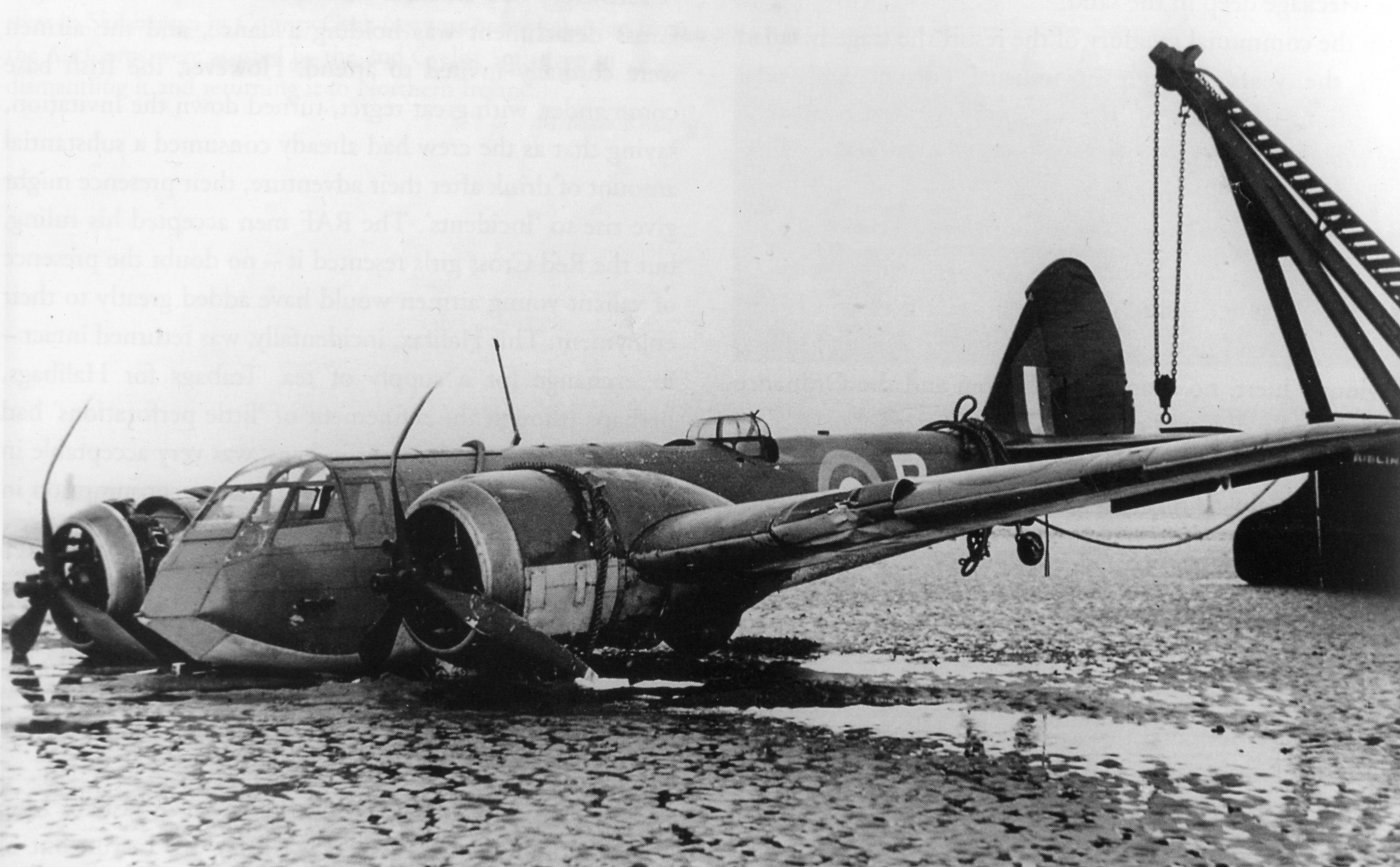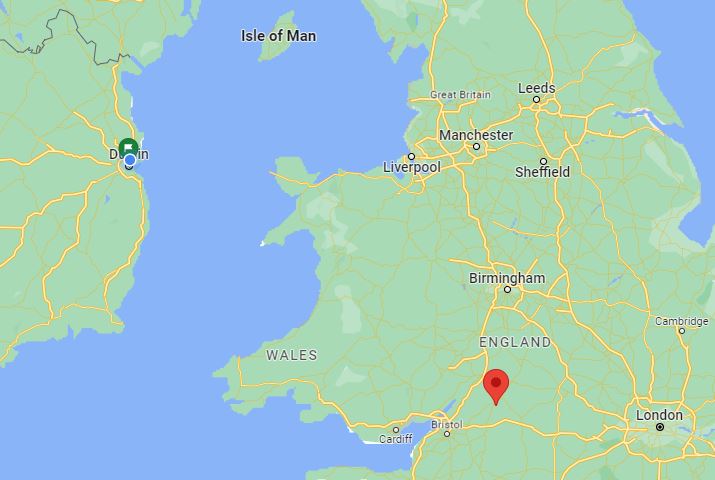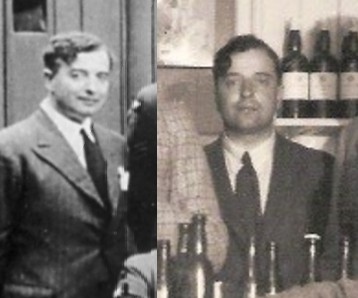Bristol Blenheim, Co. Dublin, March 1941
 Irish
newspapers on the 15th March 1941 carried the following news
article:
Irish
newspapers on the 15th March 1941 carried the following news
article:
Aircraft Down At Clontarf.
THE Government Information Bureau issued the following
statement early this morning: - "A British 'plane made a
forced landing in the sea near Clontarf, Dublin, at about 10
o'clock last night. The pilot, who was uninjured, was
rescued.
In the Irish Army file on the subject landing contain the following summary of the nights activity from the Daily Report Summary produced by the Army G2 intelligence branch.
A British Blenheim twin-engined bomber
made a forced descent on the sea about 400 yards off shore
in the vicinity of CLONTARF BATHS DUBLIN at 21.30 hrs. on
the 14th March. The Pilot who was the sole occupant of the
machine was rescued and was subsequently interned. The
aircraft is now partly submerged in shallow water.
Particulars of the pilot who is of Polish nationality are as
follows:
F.93306 Flight Sgt. STANISLAW KARNIEWSKI.
Station: Kemble, Gloucester, England.
Identity Card No. 483995.
Irish Army Officer Captain J Healy wrote the following hand
written written acount of his encournter with the pilot the
night of the crash.
15.3.41
At 00.30 hrs I was informed by Air Defense that a Polish
airman had crashed near Dublin & was being brought to St
Bricins Hospital. At 00.45 hrs I interviewed at St
Bricins hospital a man in blue grey uniform, with
three chevrons on sleeve, surrounded by cross crown &
word Polish bear shoulder. he spoke very poor English,
and understood a few words of French & German. His
story would appear to be that he was a Pole, a sergeant in
British Royal Air Force, by name Stanislaw KARNIEWSKI
stationed at Kamble (? Kemble) Gloucester, England. -
he was flying alone, a small bomber, now used as training
plane, from one point to another, and poor visibility &
absence of instruments (he had not even a watch) caused him
to lose his way. He had very little petrol, and seeing
lights like Paris, decided it was Dublin, and that it was
best he should make an emergency landing + this he
did. he claims to speak Russian well, as up to 193?
his parents were in Moscow. He was not eager to offer
any further particulars, and I therefore did not press
him. Being unhurt and dry he was removed to Collins
Bks by infantry Lieut in charge of him.
This aircraft is the subject of a well known photo, taken
during the aircraft's recovery on the Clontarf sea front.
One can see damage to the propellers, indicating the engines
being powered at the time of the landing. There is damage
to the nearside wing leading edge.

Air Corps and Army personnel attended the stricken aircraft
using the Port Control Launch during the middle of the 16th of
March, the day after the landing. At that point the
aircraft was fully submerged in the sea water. The
aircraft was being tended to by various Dublin port vessels and
members of the Marine Service. Attempts were made to lift
the aircraft during that afternoon but the port crane was
determined to not have sufficient capacity to lift the aircraft
and the slings placed around the fuselage continually slipped
off towards the tail. Efforts continued later that night
when the tide receded, The aircraft was finally floated at
23:30 hours and taken to Alexandra Basin. Using another
floating crane was made available and this finally landed the
aircraft on the dockside at 03:00 hours on 16th March. It
appears that in the effort to drain the aircraft to make it
light enough to lift, much damage was done to open up the wing
and fuselage structure.
A salvage party was dispatched to the North Wall on the 20th
March 1941 to collect the salvaged aircraft. The wreckage
was then subject to a fairly detailed technical inspection by
Air Corps personnel who found at first hand the effect that salt
water immersion would have on modern aircraft structure and
equipment.
Information gathered from the small Air Ministry Casualty file,
AIR81/5442 relates that he departed Kemble at 1510 hours on a
local training flight. Kemble is today the site of
Cotswold Airport and is just under 30 miles north east of
Bristol city center.

Information received by the RAF the following day reported his
having landed around 2100 and 2200 hours in Dublin the same
day. Sgt Karniewski is listed on his evasion report as
posted to No 7 Ferry Pool, and most of the signals in the AIR81
file relate to Headquarters, Service Ferry Pool and that at the
time of his release, this organization no longer existed.
 What
little is known about Stanislaw comes largely from Peter Sikora
and Lukas Gredys in their polish language book Polskie
skrzydła nad Irlandią and Polish databases of wartime
airmen. He was born in May 1902 in Minsk, in what
would be the Soviet Union during the war. He was an
experienced prewar pilot and had been awarded the Krzyż Zasługi
(Cross of merit) for his duty during the 1939 campaign. He
was posted then to the staff of General Józef Zając in the
Eskadra Sztabowa (Staff Squadron) and flew RWD-14 Czapla
aircraft. He was shot down by Polish troops on the 3rd of
September 1939. He escaped German capture by flying to
Rumania in a RWD-14, and in January 1940, made his way to
France. After the fall of that country he again had to
flee this time to the UK in June 1940. Due to his age, he
was assigned to ferry duties with the Ferry Pilots Pool, moving
aircraft from 5 Maintenance Unit at Kemble to front line
squadrons
What
little is known about Stanislaw comes largely from Peter Sikora
and Lukas Gredys in their polish language book Polskie
skrzydła nad Irlandią and Polish databases of wartime
airmen. He was born in May 1902 in Minsk, in what
would be the Soviet Union during the war. He was an
experienced prewar pilot and had been awarded the Krzyż Zasługi
(Cross of merit) for his duty during the 1939 campaign. He
was posted then to the staff of General Józef Zając in the
Eskadra Sztabowa (Staff Squadron) and flew RWD-14 Czapla
aircraft. He was shot down by Polish troops on the 3rd of
September 1939. He escaped German capture by flying to
Rumania in a RWD-14, and in January 1940, made his way to
France. After the fall of that country he again had to
flee this time to the UK in June 1940. Due to his age, he
was assigned to ferry duties with the Ferry Pilots Pool, moving
aircraft from 5 Maintenance Unit at Kemble to front line
squadrons
His escape and evasion file dating from November 1943 records
his birth on 08 May 1902 and his prewar service with the Polish
Air Force. In the report his narrative is recorded
as:
1. Internment
I left KEMBLE
(Gloucestershire) on 14 Mar 41 on a practice flight.
On the return journey I ran into bad weather and through
lack of petrol was forced to land in the sea near
DUBLIN. After two hours I was rescued and interned at
the CURRAGH Camp.
2. Escape Attempts
I was successful in
getting out of the camp in Aug 42, when the gate was lifted
off its hinges, but was recaptured almost immediately.
 F/Sgt Karniewski was was
released from internment in October 1943 as part of the
closure of the Allied compound. As it was clear that
he had been on a non operational mission he was sent to the
border and released into Northern Ireland with nineteen of
the other early internees. It was at that time that
the report above was created. he had featured in two
well know photo of internees. The image here on the
page composites these, the left hand image was taken at the
wedding of Roswell Tees and that on the right is an image
taken in the internees bar in the Curragh Camp.
F/Sgt Karniewski was was
released from internment in October 1943 as part of the
closure of the Allied compound. As it was clear that
he had been on a non operational mission he was sent to the
border and released into Northern Ireland with nineteen of
the other early internees. It was at that time that
the report above was created. he had featured in two
well know photo of internees. The image here on the
page composites these, the left hand image was taken at the
wedding of Roswell Tees and that on the right is an image
taken in the internees bar in the Curragh Camp.
After his release from internment, he was posted to 16th
(Polish) Service Flying Training School for refresher training
and then served as a transport pilot overseas in the
Mediterranean and Far East with first 216 Transport Group and
later 229 Transport Group. He is buried in Warsaw, having
died in 1961.
His grave, where he is buried with, it is thought his wife,
Eugenia, is a large triangular structure with an aircraft
propeller, or replica, attached to the headstone.
Compiled by Dennis Burke, 2025.
